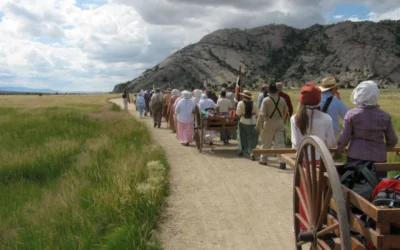Vital records were not always collected in Kentucky. However, Kentucky was a leader in this area at one time. If you understand the history of these records, it makes it more clear where you can expect to find your ancestor’s documentation.
First Attempt at Vital Records
Thanks to the passage of the Sutton Law, named for Dr. William L. Sutton (1797-1862) of Georgetown, in January 1852, the Kentucky General Assembly required tax assessors to record all vital records within a county.
Birth, death and marriage records were to be kept and sent to the Auditor’s office in Frankfort. This was one of the first efforts of a southern state to keep vital statistics. Kentucky was the first state west of the Alleghenies to pass a law requiring the recording of births, deaths and marriages.
Sutton Law is Groundbreaking Legislation
The Sutton Law was introduced to the Kentucky General Assembly in 1850, but did not gain approval until January 9, 1852. The act incorporating Sutton’s proposal into legislation can be found in the Acts of the General Assembly of the Commonwealth of Kentucky, 1851/52, Chapter 393, pp.359-60. A summarization of the Sutton vital statistics legislation provides an insight to the intent of the Commonwealth in preserving a record of its inhabitants.
The major provisions of the Sutton Law are as follows:
- All clergymen or other persons performing marriages shall keep a registry showing name, age, residence, and place of birth of each person married.
- All physicians, surgeons, and midwives shall keep a record of all births and deaths, showing time and place of birth, name of child, name of father, maiden name of mother, and their residence, sex, and color. A death record should show time and place of death, name, age, sex, color, marital status, name, surname of parents, occupation, residence, and place of birth of deceased.
- Clergymen, physicians, and midwives shall deposit these records in the county clerk’s office on, or before, January 10 of each year, and the clerk shall deliver copies of the same to the assessor.
- The assessors, while making their lists of taxable property, shall ascertain and record in a separate list all births, marriages and deaths that have occurred in the year ending December 31, preceding the time of the assessment.
- It shall be the duty of the State Auditor to make a tabular statement from the lists showing in condensed form the information herein required.
- The assessors shall have power to swear and interrogate any persons in their counties.
- The county clerks shall forever preserve these lists of births, marriages, and deaths.
- A certified copy of these records shall be everywhere accepted as prima facie evidence of a birth, marriage or death.
- Persons failing to perform these duties shall be fined not less than five nor more than twenty dollars.
Civil War Diverts Funds and Annoys Future Genealogists
The Sutton Law remained in force from 1852 to 1862. However, the majority of the data collected covers through 1861, with only a few 1862 dates in evidence. The outbreak of the Civil War in April 1861 ended the efficacy of collecting vital statistics in a war torn state.
The funds set aside for the collection of vital statistics were diverted to other purposes. The Kentucky Legislature repealed its vital statistics on August 29, 1862, see Acts of the General Assembly of the Commonwealth of Kentucky, 1861/62, Chapter 632, p.263.
One of the invaluable contributions of the 1852 vital statistics legislation was the recording of Kentucky African-American births. Although segregated by law, the races were given equal treatment in the preservation of birth records. An enslaved person was listed by surname of owner, given name, sex, date of birth, place of birth, owner’s name, and surprisingly, parents’ names, if known.
An example of the Sutton Law pertaining to slaves was Dingo Gaines of Boone County, born November 10, 1852, owner, Jas. Gaines. While no father was listed, the mother’s name was Ann. Place of residence was recorded as Boone County.
Second Attempt to Collect Vital Records
Another attempt at collecting vital records began in 1874, but only lasted for four years. Not as complete as the 1852-61 effort, and with little cooperation from the counties, this second try at statewide record keeping ended in failure 1878.
A few Kentucky counties and towns made a half-hearted effort at recording vital statistics during the 1890s and early twentieth century, but again failed in maintaining their efforts.
Third Attempt at Vital Records was Successful
Not until 1910 did the Kentucky Legislature pass a law to preserve its vital records. In Chapter 37, Acts of the General Assembly of the Commonwealth of Kentucky, 1910, pp. 96-110, an act to establish a Bureau of Vital Statistics was approved. Beginning in 1911, the Commonwealth has continuously recorded birth and death statistics.
The provisions of the 1910 legislation required that within ninety days, or as soon thereafter as possible, of the enactment of the law, the State Board of Health “shall appoint a local registrar of vital statistics for each registration district in the State, excepting such cities or towns as are otherwise provided for.”
The 1910 legislation was far-reaching. State regulations required all superintendents, managers, or other persons in charge of any institutions where people were registered, to keep vital records of their charges. Physicians, midwives and undertakers were also ordered to keep birth and death information and furnish it to the State Registrar.
References
Since 1911, Kentucky has collected vital records information from the counties. Today, the Office of Vital Statistics manages the records.
Editor’s Note
The University of Kentucky maintains a digital archive with the Journals of General Assembly. Use this link to search and read the journals.




